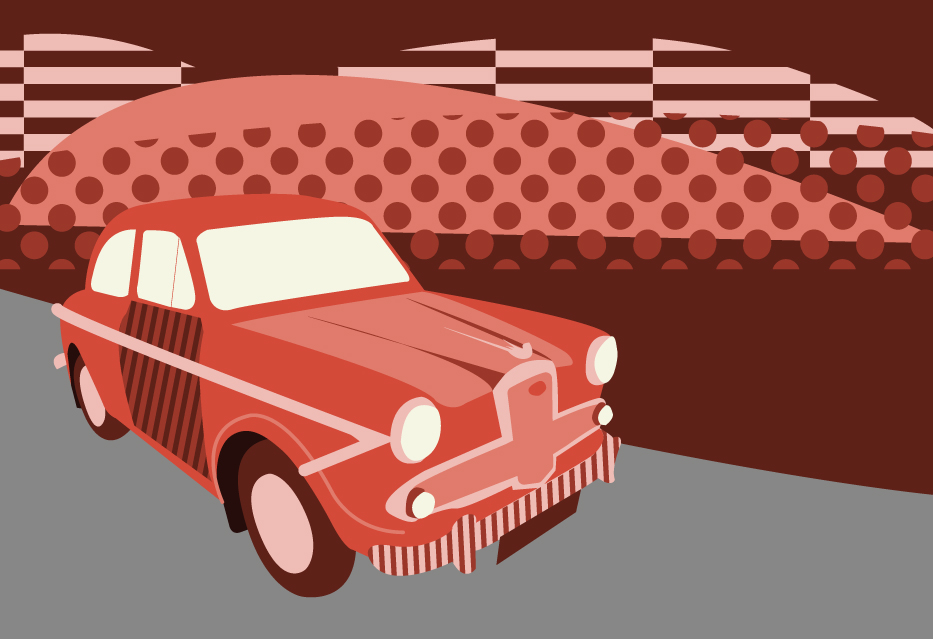When did you last see a Fiat 600 on the road? No, me neither. Indeed, the uninitiated may be forgiven for not even knowing the 600 ever existed, such has been the cultural dominance of the 500, the iconic little car resurrected by the Italian firm in 2007 after 32 years out of production.
But it was the the 500s bigger brother, and predecessor by two years, that was the original, mass-selling small Italian car, Fiat’s first rear-engined vehicle and in production a whole four years before Britain’s Mini.
We look at the oft-forgotten classic that sold a million cars in its first six years of production.
It may not be quite as cute as its bubbly little sister, but the Fiat 600 was the ground-breaking supermini that paved the way for the diminutive 500 to become an icon.
While the Turin company had long been famed for producing small cars – the Topolino was the smallest production car in the world when it was introduced in 1936 – the 600 was something new for a public emerging from the shadows of war.
The original 500, usually called the Topolino, was ostensibly a two-seater and soldiered on for a decade after the end of the second world war.

By the time it was replaced in 1955, the all-new 600 had been in development for four years as designer Dante Giacosa wrestled with a way to seat four adults in comfort in an affordable, economical small runabout.
The answer was to place the four-cylinder, water-cooled 633cc engine in the rear to free up cabin space to seat four in a body shell just 320 centimetres long. A few years later, of course, Sir Alec Issigonis managed the same trick in a body 15 centimetres shorter and a front-mounted engine…his own space-saving trick was to mount the Mini’s engine transversely.
When the 600 was launched at the Exhibition Hall in Geneva, it immediately struck a chord with motoring journalists impressed by the leap forward in styling from the pre-war Topolino and the “unorthodox, ingenious solutions” to saving space.
The Italian public clearly approved too, and the 600 quickly became the status symbol of a new, urbanised population who wanted a car to go with their TVs and washing machines.
A million cars were sold in the model’s first six years of production and, by 1961, a remarkable 1,000 cars a day were being produced by the Mirafiori plant, which was expanding at a rapid rate.
The 600 never sold particularly well in the UK, largely thanks to the arrival of the Mini, and as of 2016 there are only 82 on the nation’s roads according to the howmanyleft.co.uk website.
Adrian Flux Classic Car Insurance
At launch, the car featured two “suicide” doors, dubbed because they were rear hinged and easy to fall out of if they opened and were caught by the wind – especially in the days before mandatory seat belts. These were changed in 1964 to front-hinged doors for safety reasons, not surprisingly.
The 600, which featured hydraulic drum brakes and unique single double-mounted leafspring suspension, also had something else no other small car of time could boast – an efficient heating system and windscreen demister. Such luxuries!
The little engine produced 28hp and a top speed of only 59mph (no 0-60 times here) but, in 1956, a year after production began, race car company Abarth – which had begun its association with Fiat four years earlier – took delivery of the 600 and boosted its engine capacity to 767cc.

Featuring high compression pistons, a lighter flywheel and crankshaft and a larger capacity radiator, the red-striped Abarth managed a top speed of a heady 81mph, with a 0-60 speed of 20 seconds – pretty quick for a small car in 1956.
In the same year, a soft top version was introduced, along with the extraordinary Multipla estate. This quirky forerunner of the modern day MPV managed to squeeze six adults into a floorplan of just 50 centimetres, and had a flat, van-like front, a higher roofline and the original sloping rear end, which made it hard to tell which was the front and back.
The Multipla – the name is still in use today for a car once voted the ugliest of all time – has claims to be the world’s first mini-van (it’s much, much smaller than a VW Camper) and was introduced to cater for both family and commercial use.
The six-seater utilised a bench front seat and four individual seats in the rear that folded completely flat to make a large boot – truly a shape of things to come.

Motor magazine measured the top speed at 57mph, which took nearly 50 seconds to achieve, and arguably the cutest MPV ever made recorded 38mpg.
More than 243,000 Multiplas were sold between 1956 and 1970, a fair few of them put into service as taxis, and Fiat could do worse than use the modern/retro styling concept so successful with the 500 when designing the next Multipla.
One of the more curious iterations of the 600 was the Ghia Jolly, produced in limited numbers for both the saloon and Multipla. With wicker seats for comfort (really?) and a fringed canopy for a roof, they look like a an upmarket golf cart, and were used on large yachts owned by the wealthy, like Aristotle Onassis, and as taxis in upmarket resorts. Fewer than 100 are believed to exist today.

Although the 600 was never a hit in the UK, it was hugely successful in other parts of the world, particularly in Spain as the Seat 600, where it helped the economic recovery after the Spanish Civil War; Argentina; and Yugoslavia as the Zastava 750.
Although production stopped in Italy in 1969, the car remained in production in Argentina, Uruguay, Colombia and Chile until 1982, when it was replaced by the more modern 147 (though production overlapped in some South American countries).
In all, nearly 2.7million 600s were produced at the Mirafiori plant in Italy, with an unknown number manufactured in South America, making the little car a phenomenal global success story, and not too far behind the original 500 at 3.8million.
It’s just a shame so few survive to raise a smile on UK roads.
Like our illustration of the Fiat 600 at the beginning of the article?
Download a free high-quality poster version here.
Insurance from Adrian Flux
Get competitive classic car insurance for the Fiat 600 and its variations with Adrian Flux.
Features can include:
- Agreed value
- Limited mileage discounts
- Owners club discount
- Laid up cover
- Wedding hire cover








